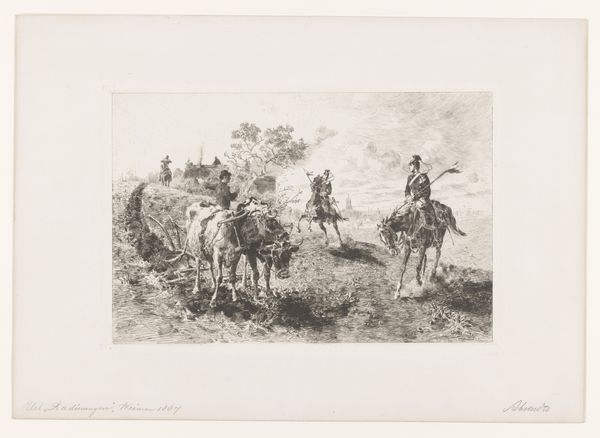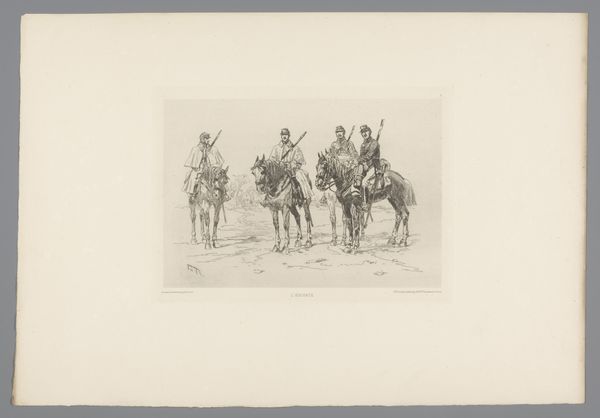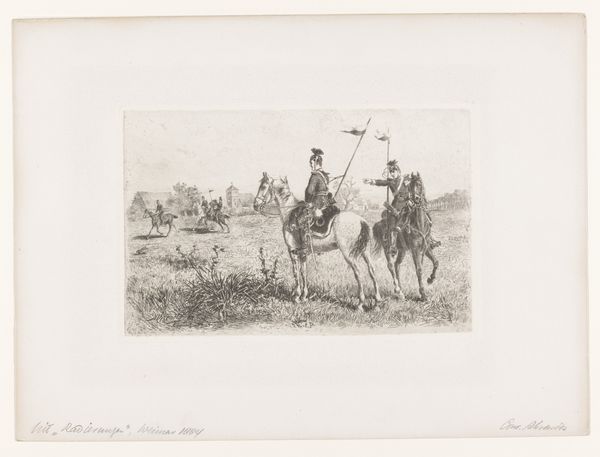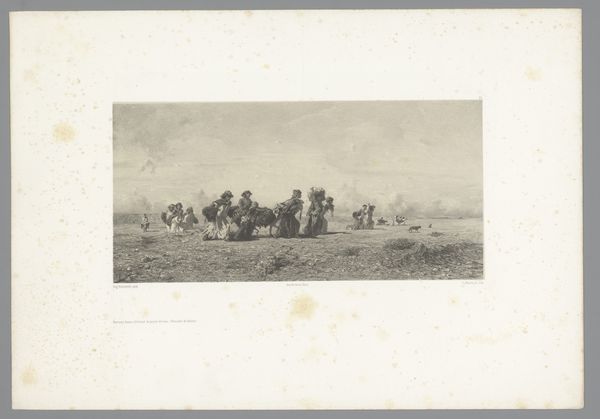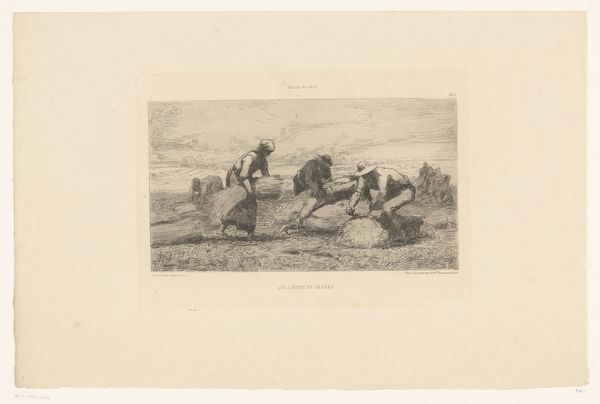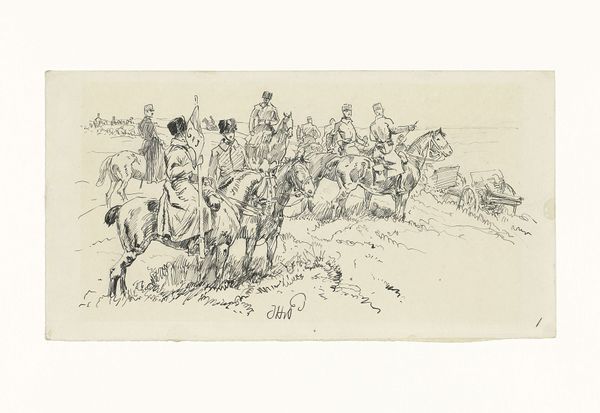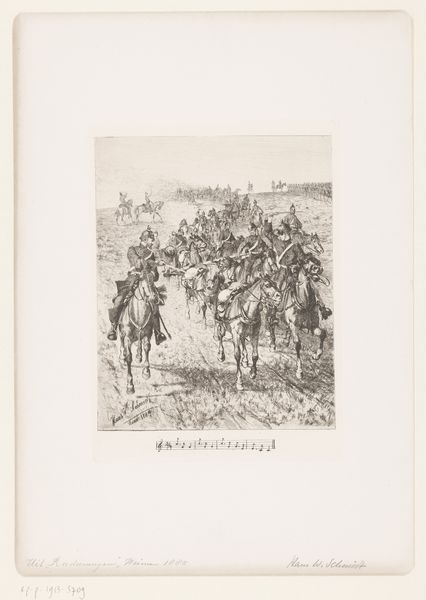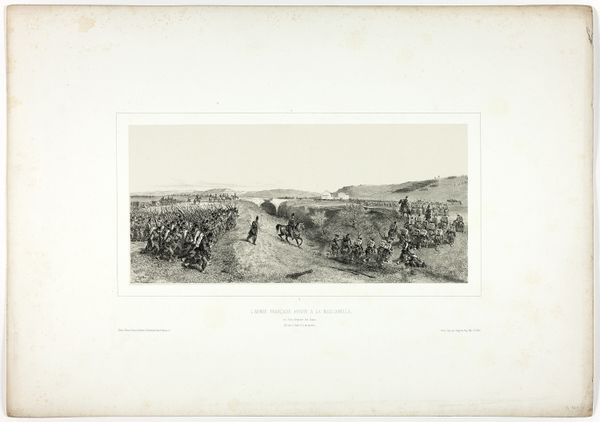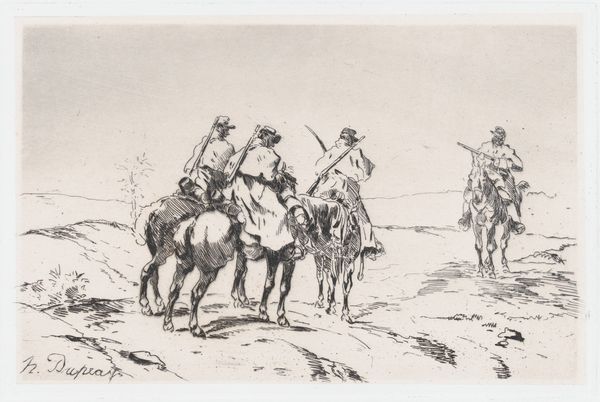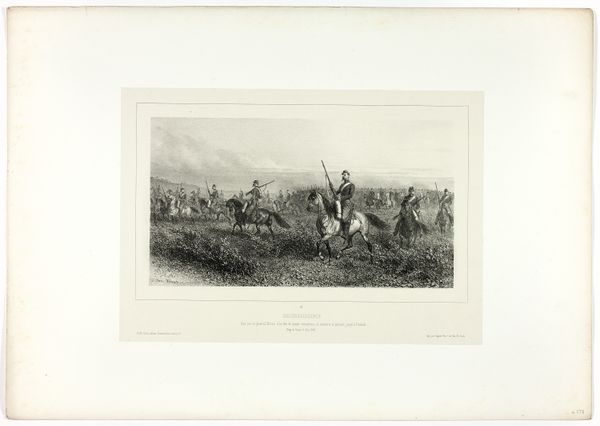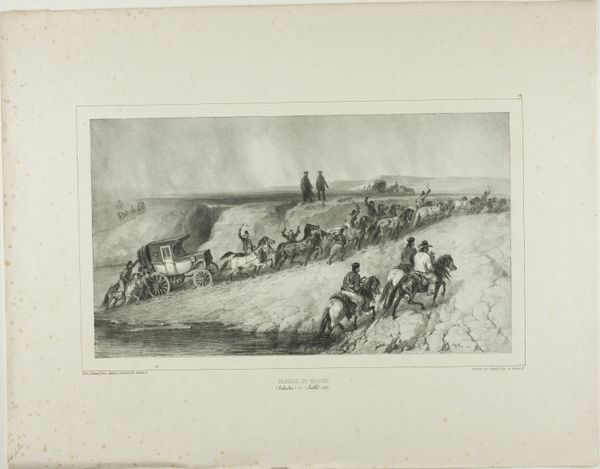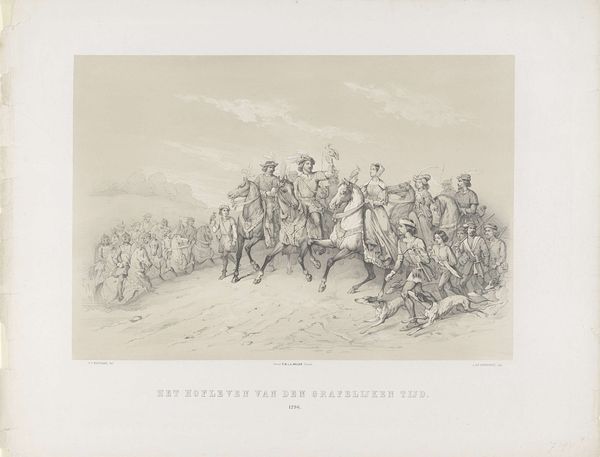
Bereden artilleristen van de Keizerlijke Garde op het slagveld 1809
0:00
0:00
justuspieterdeveer
Rijksmuseum
print, etching, engraving
#
narrative-art
#
ink paper printed
# print
#
etching
#
pencil sketch
#
old engraving style
#
landscape
#
romanticism
#
history-painting
#
engraving
#
monochrome
Dimensions: height 279 mm, width 335 mm
Copyright: Rijks Museum: Open Domain
Editor: So this is “Bereden artilleristen van de Keizerlijke Garde op het slagveld,” or “Mounted artillerymen of the Imperial Guard on the Battlefield,” an etching and engraving by Justus Pieter de Veer from 1809. It feels…melancholy, despite the activity. What do you see in this piece? Curator: I see a romanticized, yet undeniably grim depiction of war. It invites us to consider the narratives we construct around conflict. Beyond the valor and glory often associated with military imagery, this work hints at the devastating human cost. Who benefits from this narrative, and whose voices are being silenced? Editor: You mean like, who is being excluded in the representation? Curator: Precisely. Think about the historical context: this was the Napoleonic era. De Veer created this piece decades after the depicted scene. This wasn't documentary; this was a carefully constructed narrative. What purpose did it serve? To glorify war, or perhaps to reflect on its consequences from a safer distance? Editor: It’s like a critique, hiding in plain sight. I also see a stark contrast between the active soldiers and the dead or dying scattered on the ground. Curator: Indeed. The landscape itself becomes a character, bearing witness to the violence. De Veer's choice of medium, engraving and etching, lends a sense of immediacy and rawness. What statement is the artist making by focusing on that juxtaposition of the glory of war with the death and suffering? Editor: I hadn't considered it that way before, as an activist statement embedded within a historical record. Thank you for highlighting that. Curator: My pleasure! And remember, art is never neutral. Examining the perspectives embedded within it allows us to understand our history and present a bit more clearly.
Comments
No comments
Be the first to comment and join the conversation on the ultimate creative platform.

